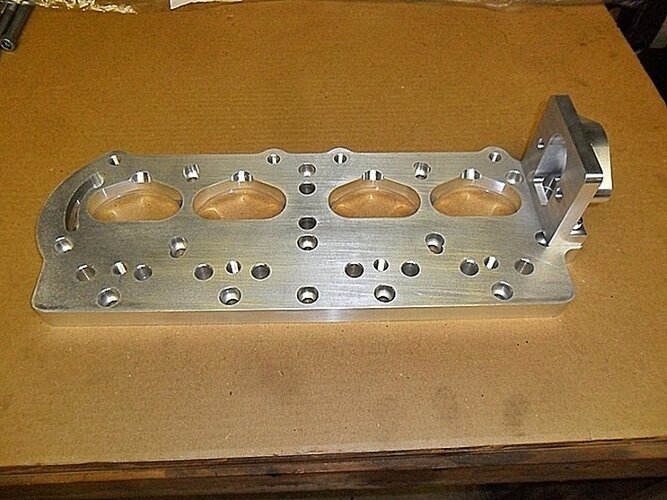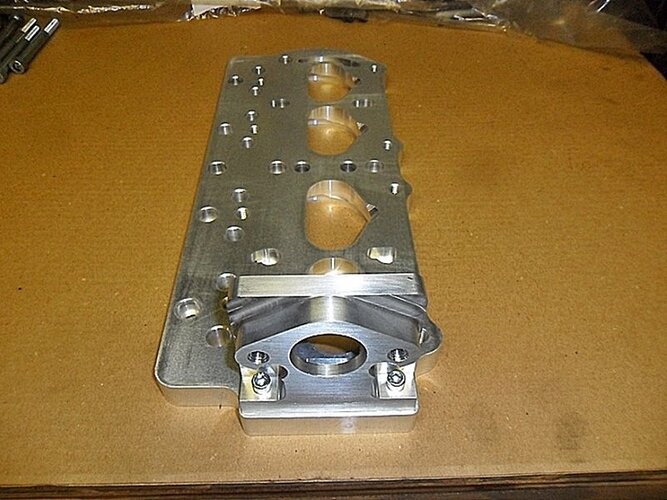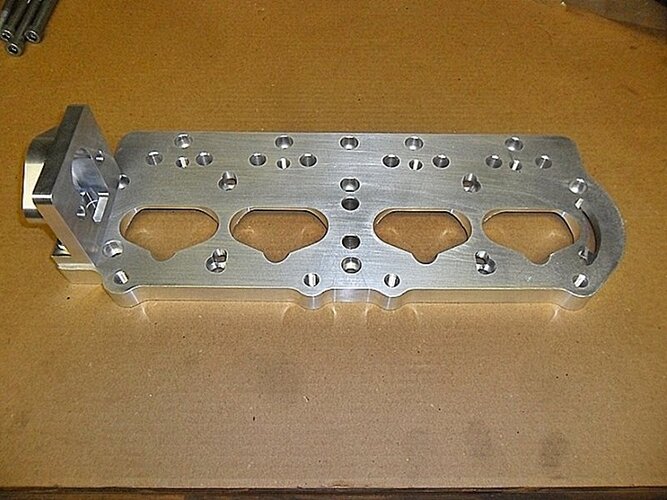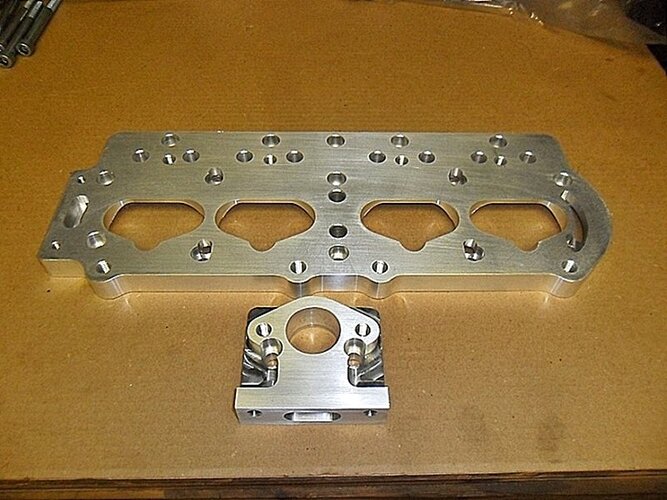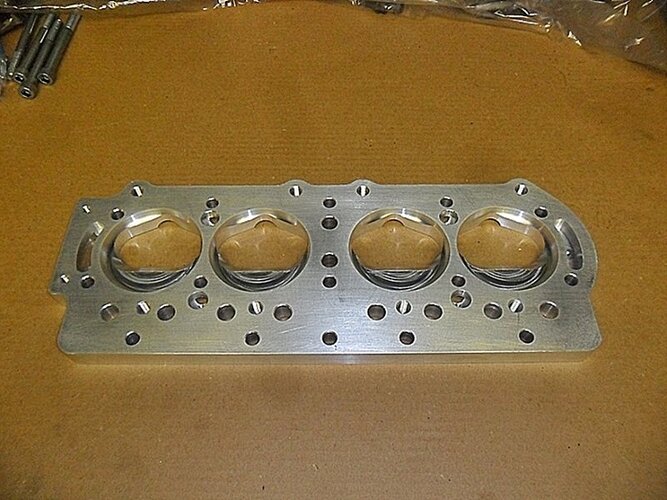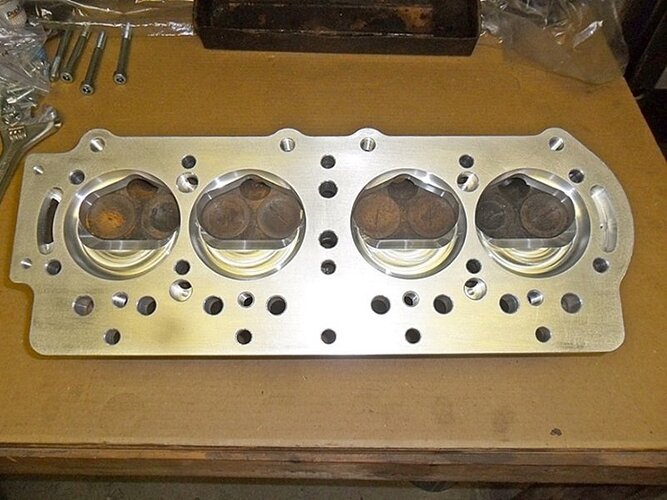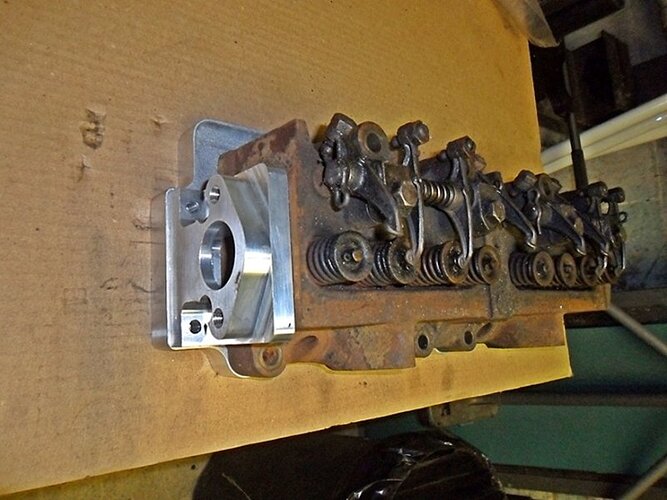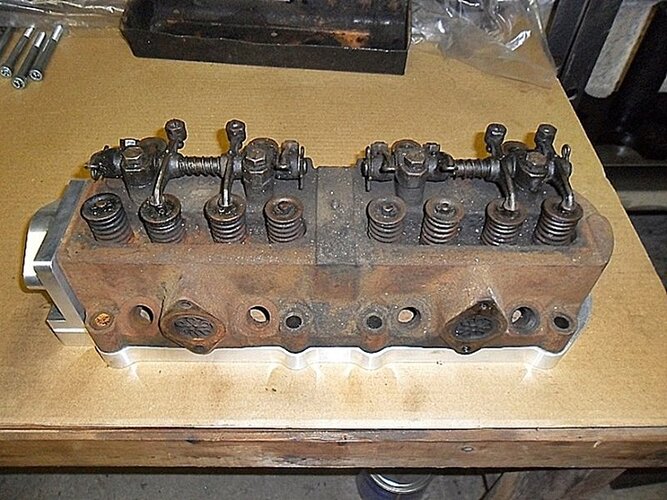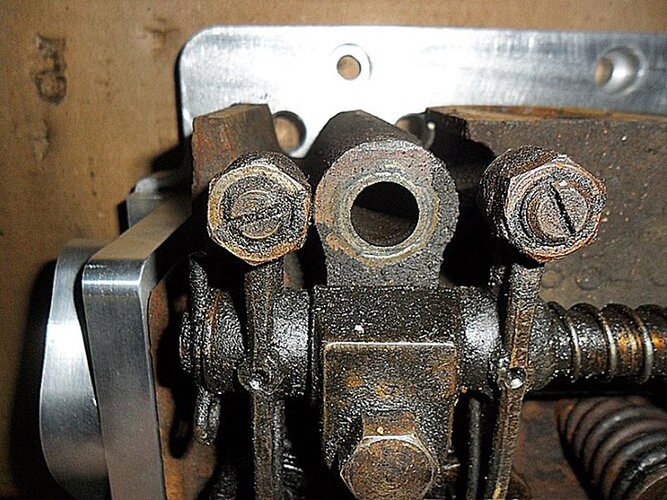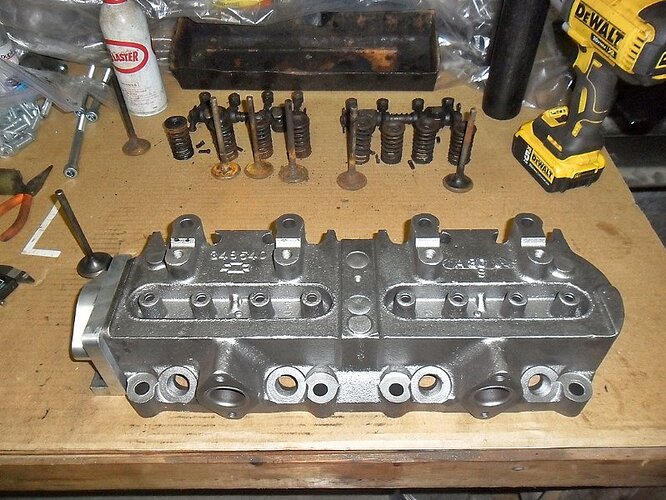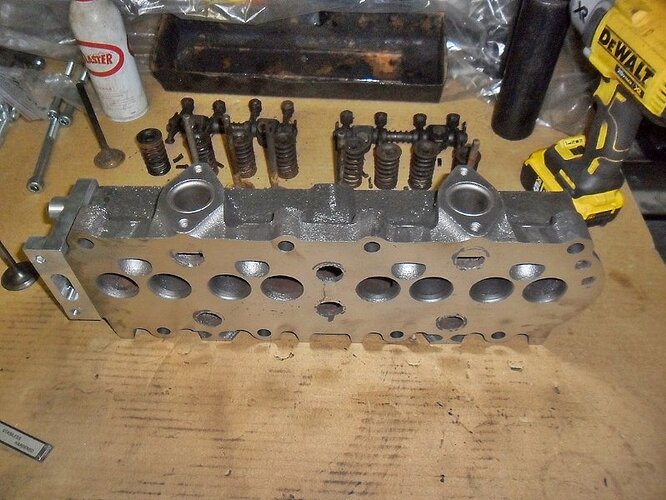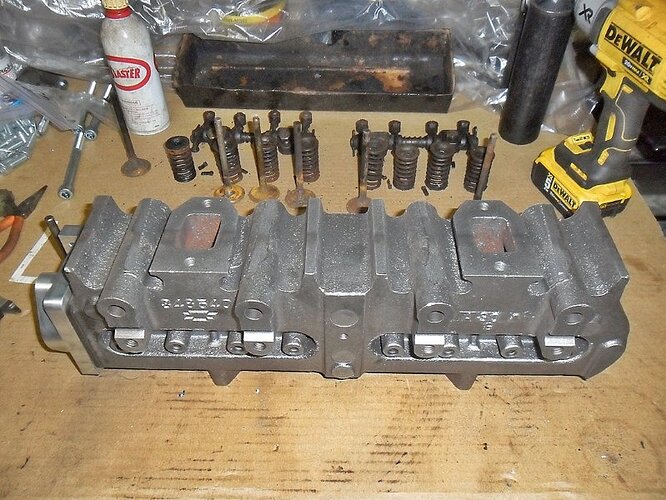I recently purchased a absolutely beautiful machined adapter plate to put a '28 Chevy head onto a Model T block. I wanted to show you all what I have, what I think, and what may be entailed in doing this swap.
This will be a long drawn out thread, so don’t expect this done in a week. I also will be doing mock-up, not necessarily a running engine, at least at this point.
First off, the plate and water adapter are really TOO good for a Model T. Gene French started this project design and decided Scott Hansen needed something to do, so he handed the project to him to finish it and bring it to fruition. Scott has a very large machine shop. This is the kind of quality I would expect for a pure breed race engine part. Scott informed me it took 28 different tools in his machine shop to make the plate, these are all CNC’d.
Scott did supply me with hardware, and not cheap stuff either. These are high grade socket head bolts (allen head as some call them). Now the socket head hardware may not be for everyone, but except for the outer row of adapter to block bolts on the cam side, and the water outlet bolts, the rest are completely hidden. The ones in the adapter plate are all countersunk also. I suppose if you painted everything black, you could hide alot, essentially tricking the eye.
Setting the plate on the head, the first thing I noticed was how tight the chamber was around the valves. This may have to be opened up for a little more room in my opinion, which would also help to unshroud the valves a little–which is better for air flow. The fit otherwise to the bottom of the head is good, and the water outlet has a little play to fit a head if it is shaved slightly. The advantage of this water adapter over the Jern Thunderbolt kit is that the outlet does not need to be machined with the head, and it bolts to the plate offering a better sealing capability.
The first issue if you will (I don’t personally believe you can do this without any issues–after all, think about what is taking place), is that the two end pushrod holes are partially covered by the head. This was unexpected, but but I can see why it is. Before I purchased the plate, I had asked Gene about pushrod alignment. When Gene had answered about this to me in a previous post about the issue, he said he had used the spindly 1/4" chevy pushrods shortened, and bent the rocker arm for better alignment. I don’t know and will have to check about if he also experienced interference in the plate and head in this area. I’m thinking a little grinding here may be in order, but would like to find out what has been done first By Gene or someone else.
